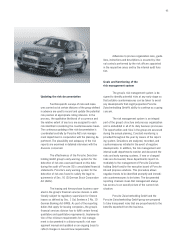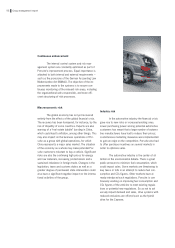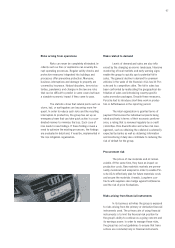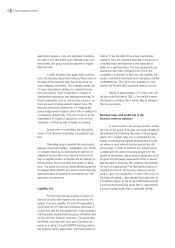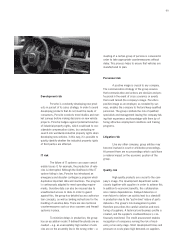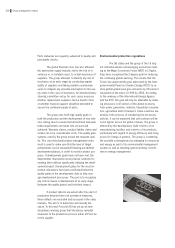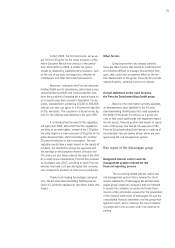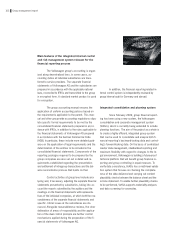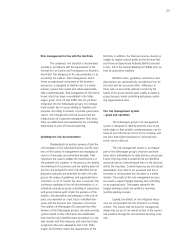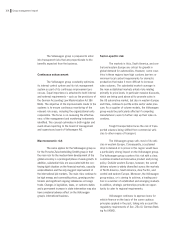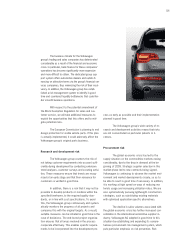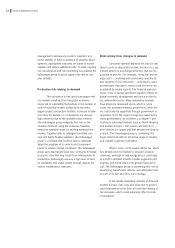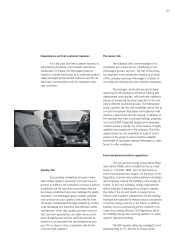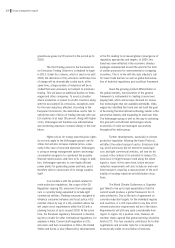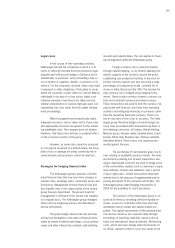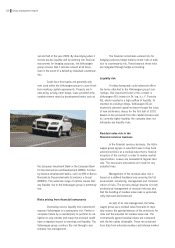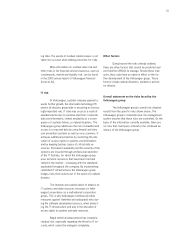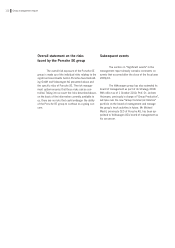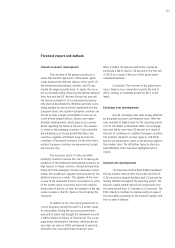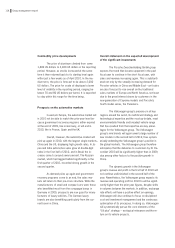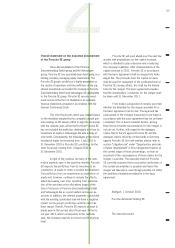Porsche 2009 Annual Report Download - page 105
Download and view the complete annual report
Please find page 105 of the 2009 Porsche annual report below. You can navigate through the pages in the report by either clicking on the pages listed below, or by using the keyword search tool below to find specific information within the annual report.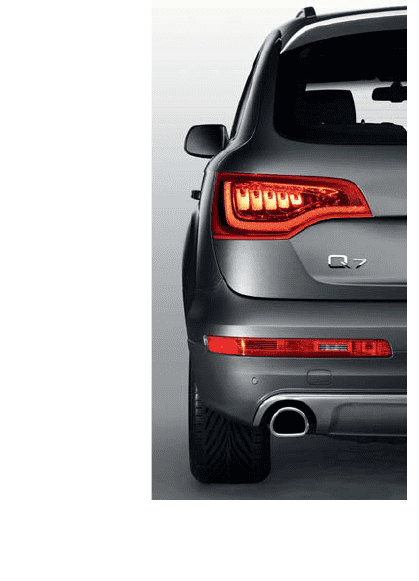
The business climate for the Volkswagen
group’s trading and sales companies has deteriorated
considerably as a result of the financial and economic
crisis. In particular, bank finance for these companies’
operations has become significantly more expensive
and more difficult to obtain. The dedicated group sup-
port system offers automotive dealers and outlets fi-
nancing on attractive terms via the group’s financial ser-
vices companies, thus minimizing the risk of their insol-
vency. In addition, the Volkswagen group has estab-
lished a risk management system to identify in good
time and counteract liquidity bottlenecks that could hin-
der smooth business operations.
With respect to the potential amendment of
the Block Exemption Regulation for sales and cus-
tomer service, we will take additional measures to
exploit the opportunities that this offers and to miti-
gate potential risks.
The European Commission is planning to end
design protection for visible vehicle parts. If this plan
is actually implemented, it could adversely affect the
Volkswagen group’s original parts business.
Research and development risk
The Volkswagen group counters the risk of
not taking customer requirements into account suffi-
ciently during development by conducting extensive
trend analyses, customer surveys and scouting activi-
ties. These measures ensure that trends are recog-
nized at an early stage and that their relevance for
customers is verified in good time.
In addition, there is a risk that it may not be
possible to develop products or modules within the
specified timeframe, to the required quality stan-
dards, or in line with cost specifications. To avoid
this, the Volkswagen group continuously and system-
atically monitors the progress of all projects and
compares this with the original targets. As a result,
suitable measures can be initiated in good time in the
case of deviations. The end-to-end project organiza-
tion ensures that all areas involved in the process
cooperate effectively. This enables specific require-
ments to be incorporated into the development pro-
cess as early as possible and their implementation
planned in good time.
The Volkswagen group’s wide variety of re-
search and development activities means that risks
are not concentrated on particular patents or li-
censes.
Procurement risk
The global economic crisis has led to the
supply situation on the commodities markets easing
considerably, due to the drop in demand at the be-
ginning of 2009. Strategic supplier selection in this
market phase led to new contracts being signed.
Volkswagen is continuing to observe the market envi-
ronment and market developments closely, so as to
be able to react in good time if necessary. In addition,
it is working at high speed on ways of reducing ma-
terials usage and increasing utilization rates. We are
also systematically pursuing lightweight construction
strategies, such as substituting existing materials
with optimized application-specific alternatives.
The decline in sales volumes associated with
the global economic crisis has further increased con-
solidation in the international automotive supplier in-
dustry. Volkswagen AG adapted in good time to this
situation by establishing and expanding its compre-
hensive procurement risk management system, which
puts particular emphasis on risk prevention. Risk
105


